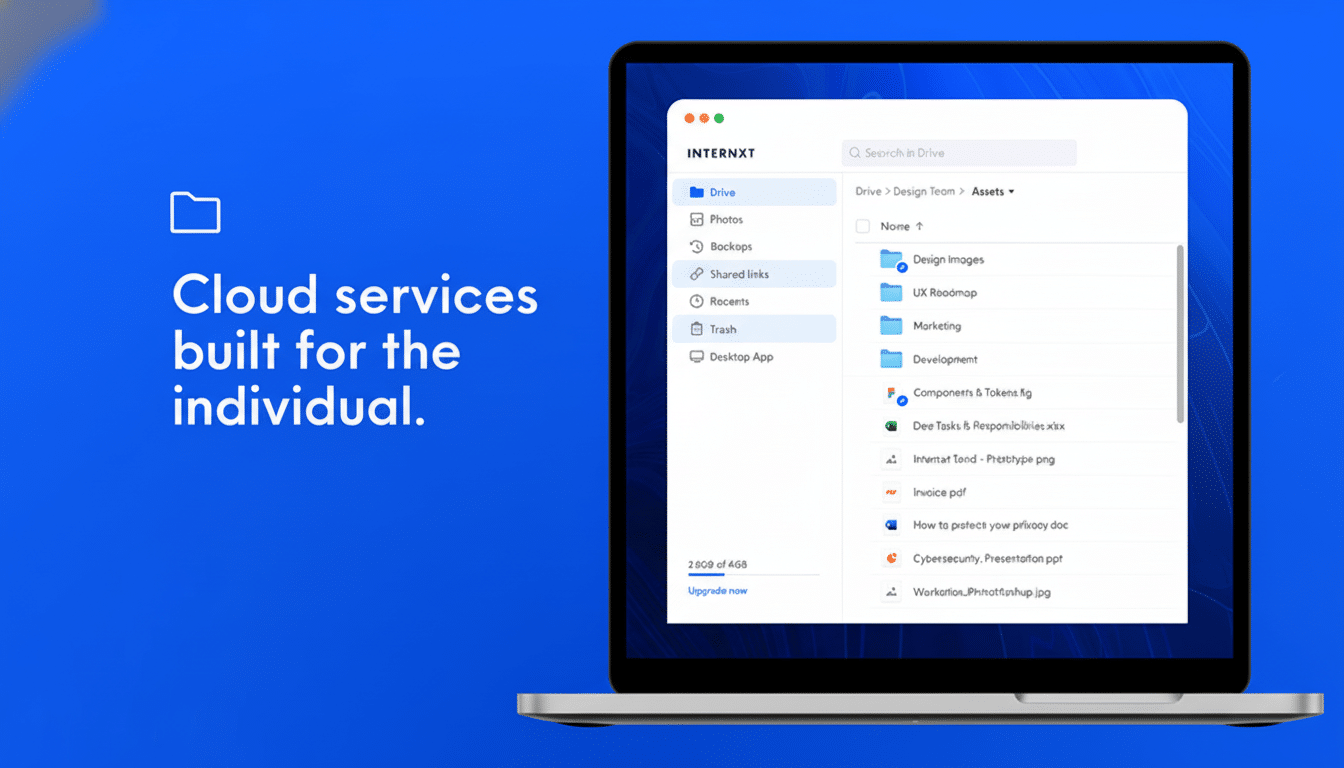A rare one-time cloud storage offer is picking up some virality: Internxt, a privacy-focused cloud storage service, has unveiled the ultimate discount plan and positioned it as a buy-once option for anyone annoyed about paying each month.
Listed for $7,900, the deal is priced at $679.97 — a savings of about 91% — and aims to appeal to creatives, small teams, and households pushing the limits of traditional subscriptions.

More than the sticker shock, the offer is straightforward: lock in big-time capacity without a rolling bill.
The plan is being made available through a popular software deals marketplace and squarely targets subscription fatigue as cloud bills explode due to larger file libraries, backups across multiple devices, and ever-larger media formats.
What 50TB Really Means for Photos, Video, and Backups
For reference, 50TB is the equivalent of around 50,000GB. At an average of 8MB per photo, that’s about six million images. 4K video at 100Mbps will get you approximately 45GB per hour, or around 1,100 hours of footage. And even the most massive of RAW photo libraries, multi-year phone backups, and sprawling office documents have a comfortable place to stay.
That scale is important for redundancy as well. Various flavors of “cloud and an on-site hard drive” are popular solutions for people who want to meet the 3-2-1 backup recommendation from security agencies like CISA: have three copies, on two different media, one of which is off-site. A 50TB cloud bucket could become the off-site linchpin for entire families or project teams.
Internxt’s Security and Privacy Credentials Explained
Internxt pitches itself as privacy-first: files are end-to-end encrypted and keys are served client-side in a zero-knowledge model. That way, the provider can’t read your content — a feature security professionals like because it narrows the blast radius of potential breaches. Data in transit is encrypted using the same modern transport encryption as any other web application, and it says it’s GDPR-compliant (that’s Europe’s strict data protection framework).
Its platform has undergone third-party security testing by Securitum, and its apps are open-source, which also provides the ability to independently examine client behavior (a signal of trust). Though many established clouds offer strong security, trade-offs with privacy may vary, either for ad-supported or heavily analytical services. The company’s pitch is that your files are stored, without being mined for marketing or profiling.

The Worth of a Big-Brand Subscription Versus Lifetime
The math becomes clear when you compare lifetime to monthly plans. The largest consumer tier that Google One offers publicly is 30TB at $149.99 a month; multiply that by five years and you’re over $9,000 with no equity in the storage after the fact. Apple’s iCloud+ goes up to 12TB for $59.99 per month, so reaching 48TB would involve a level of coordination and multiple accounts. Dropbox’s business tiers can scale to “as much space as needed,” but pricing generally begins per user and is for teams, not solo users with an enormous single vault.
Lifetime deals flip the calculus: the cost up front is higher, but break-even can be counted in months instead of years for heavy users. IDC estimates the global datasphere will top 175 zettabytes this decade, a reminder that storage needs seldom, if ever, wane. For the wielders of 4K/8K-capable pros or those who juggle project archives as an entry point for all their backup devices, to families gathering multi-device backups, cutting down on the heavy load you have to manage holds an appeal.
Caveats and Practicalities to Consider Before Buying
“Lifetime” typically refers to the life of the service, not your lifetime. And as with any one-time deal, longevity in the marketplace will depend on how well the provider lasts. Look over fair-use and bandwidth policies, data recovery speeds, file-size limits, and automated versioning or snapshot recovery to protect against ransomware. Also verify platform support between desktop and mobile, and if there’s a clear home-based path to export data should you ever need to move in the future.
No one provider should be all of your backup strategy. 3-2-1 is still the order of the day, with most experts suggesting that storing in the cloud along with at least one copy on a separate device be accompanied by an offline or immutable backup for vital assets. If you are consolidating from several drives, plan the initial upload window — 50TB can take a while depending on your connection and the library’s ingest performance.
Who Should Consider This 50TB Lifetime Cloud Offer
Video creators, photographers, and agencies who are building a library will benefit most from the headroom. Families with multiple phones, laptops, and consoles can store backups and media libraries in one place. Small businesses looking for private, encrypted file storage without per-user pricing may also find the economics attractive, provided they vet collaboration features and admin controls.
For lightweight users, regular 2TB–6TB plans could be cheaper. For people who are already paying for big tiers or trying to make space by juggling accounts, the 50TB-per-transaction option is all of the hard-to-find attributes in one place: scale, privacy-by-design, and predictable cost. That’s the fundamental pitch: pay once, store with confidence, and never see a monthly cloud bill again.

